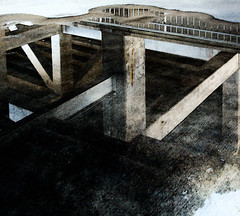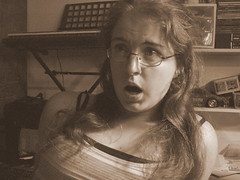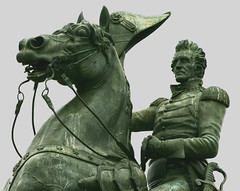Saturday, my husband tackled reorganizing the clutter on a table (all horizontal surfaces attract clutter, did you know?). He sorted the largest pile of our print books. He started off with a system, but in the end, he sorted them by size (trade paperback was his favorite) (he’s a great husband for a writer 😉 ). Then it was my turn to sort them into actionable groups.

Here’s the full pile, sorted into stacks.
The first three:

Labeled: “Realistically, I’ll never read these. Give away?”
For the sake of kindness, I didn’t display these spines. I did toss an armload right into the charity bin.
(This also contained the oversized books, which we aren’t giving away, but weren’t worth their own pile.)
Next, the pile of books I might actually read:

The First Counsel by Brad Meltzer
Point Blank by Catherine Coulter
The Cat Who Blew the Whistle, The Cat Who Brought Down The House and The Cat Who Saw Stars by Lilian Jackson Braun
Caught by Harlan Coben
Sin and Syntax: How to Craft Wickedly Effective Prose by Constance Hale (I actually bought this one new! Full price! And a year later, it’s still on the pile.)
The No. 1 Ladies’ Detective Agency by Alexander McCall Smith
My critique partners’ beautiful finished books: Things Hoped For by Emily Gray Clawson and All Fall Down by Julie Coulter Bellon
Contentment by Maria Covey Cole
The Friday Night Knitting Club by Kate Jacobs (probably the oldest member of the pile I still totally intend to read)
A Perfect Spy by John le Carre
And then we get into books that have no business being on my “to be read” pile . . . because I’ve already read them. Nonfiction and reference first:

Highlights:
The Breakout Novelist: Craft and Strategies for Career Fiction Writers by Donald Maass
You Just Don’t Understand: Women and Men in Conversation by Deborah Tannen
Writing the Breakout Novel by Donald Maass
The Power Of Point Of View: Make Your Story Come To Life by Alicia Rasley
Spunk & Bite by Arthur Plotnik
And fiction, another keep pile:

Angels & Demons by Dan Brown
Variant by Robison Wells
Tower of Strength by Annette Lyon
Courting Miss Lancaster by Sarah M. Eden
Cold As Ice by Stephanie Black
Not My Type by Melanie Jacobson
Caller ID by Rachelle Christensen
Inside Out by Barry Eisler
Matched by Ally Condie
Carrier of the Mark by Leigh Fallon
Whew! Now to actually act on these stacks—give away, put away and read. And then, tackle the 300 on my Kindle.
Uh yeah.
What’s sitting on your physical TBR pile? What’s been there longest? Pictures? Come share!


 I was really hoping to finish this first draft in February, but (sigh) it didn’t happen. But I’ve been keeping careful track of what I did do:
I was really hoping to finish this first draft in February, but (sigh) it didn’t happen. But I’ve been keeping careful track of what I did do:








 Here are a couple things you can do to hone a book’s focus, from the theme down to the more granular level.
Here are a couple things you can do to hone a book’s focus, from the theme down to the more granular level.
